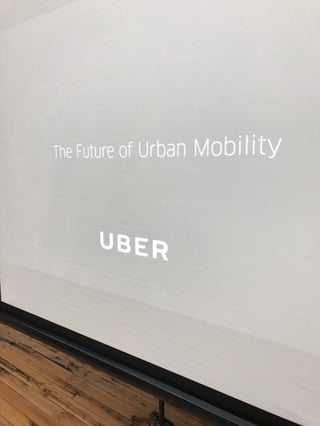When the creators of the famous television show, The Jetsons imagined what life would be like a century into the future (2062, now just 45 years away), they saw many things. Floating cities. Colonies on other planets. And, space cars that folded into brief cases to be carried around during the day.
It’s a silly notion but a quite prudent one to consider now. As autonomous vehicles inch closer to complete reality, we’re left now to think about how they can modify the make-up of a metropolis.
Autonomous cars, or self-driving cars, are vehicles that can navigate without human input. Vehicles that can completely drive themselves. It’s a future in which your car would drop you off at work and drive itself back home to wait in the driveway for your punch-out time. Or drop you off at work and fold into a brief case (I really haven’t worked out all the kinks yet). It’s a future in which our cities are no longer cluttered with cars. It’s a future in which we can turn our many parking lots into parks. Where the dominating overhead color of our cities is a luscious green rather than an industrial, clouded gray (grey?).
According to former U.S. Secretary of Transportation Rodney E. Slater at the IEDC Future Forum, advanced autonomous vehicles have a $3 trillion potential. They promise a region of less congestion and more livability. While there is that great potential, there are also great challenges and questions to ponder. Technology is already advancing faster than regulations. There are questions on federal versus state requirements. Safety and reliability, of course are massive concerns. One of the biggest unknowns remaining is about how to then plan for the future of our cities.
How does the future of transportation in cities look? In a small New Jersey suburb 30 miles outside of New York City, it is a vision with much less cars. Rather than paying to build a parking ramp, the city is paying Uber money and in turn Uber is then offering free or discounted rides to people in those cities. It’s a way to keep cars from the road and from parking in the city where it is such a premium. The decision to forgo a parking ramp also begs the general question, is infrastructure preparing for an unprecedented boom with the bountiful available space?
“Infrastructure offers an opportunity for our country to come together in discussion,” Slater said.
Back home, the city of Buffalo seems to be somewhat ahead of the curve in its efforts to curb parking. Buffalo’s Green Code (green hyperlink, nice touch) does not mandate a minimum parking requirement for businesses. Under most green codes, a business owner must offer a specific number of off-street parking spots per employee. This made sense when the consensus was to encourage automobile usage. Now, in a new age, Buffalo’s green code is “allowing the market to respond to changing lifestyle preferences and a range of transportation choices.”
In Buffalo Niagara, and Upstate New York as a whole, ride-sharing has arrived. Companies like Lyft and Uber opened up shop in Buffalo Niagara on June 29. Though that only immediately means Stacy doesn’t have to call her ex for a ride home from Mr. Goodbar at 4:03 a.m., the long-term effects are endless. These companies, Lyft and Uber, are some of the ones pioneering the race towards autonomous vehicles.
 Recently, Uber held a conference in Larkinville with General Manager Matt Powers titled “The Future of Urban Mobility.” He first had everyone at the conference raise their hand if they had driven there alone. Almost everyone in the room raised their hand and, though the bumbling of my low-hanging muffler makes the ride feel much less lonely, I too raised mine. The point was that every single person in that room was going to the same place and yet we each all brought our own car, taking up significant space in the parking lot and adding to traffic on the roads. Most cars fit at least four people, and are still almost always carrying only one passenger.
Recently, Uber held a conference in Larkinville with General Manager Matt Powers titled “The Future of Urban Mobility.” He first had everyone at the conference raise their hand if they had driven there alone. Almost everyone in the room raised their hand and, though the bumbling of my low-hanging muffler makes the ride feel much less lonely, I too raised mine. The point was that every single person in that room was going to the same place and yet we each all brought our own car, taking up significant space in the parking lot and adding to traffic on the roads. Most cars fit at least four people, and are still almost always carrying only one passenger.
That lifestyle is changing, though. About 10 percent of millennial Uber riders have given up or skipped on buying a car. That number would logically only increase in the coming years as ride-sharing expands into the zeitgeist and new geographies.
In the presentation, Powers made the arguments for both short and long-term effects ride-sharing could have on the transportation models of cities. He laid out ways in which Uber compliments public transportation rather than competes against it. He showed that the average person spends about 80 hours in their car per year. Those are the same cars that sit idle in parking lots or driveways for 95 percent of their existence. And though almost always idle, cars contribute 22 percent of all carbon emissions.
There are safety, environmental, and industrial problems that autonomous vehicles and ride-sharing have the capabilities to fix. It is up to us to be prepared to maximize those changes.
While we’re not sure if The Jetsons solved the carbon emissions problem by 2062, we know its 1960s counterpart did.




